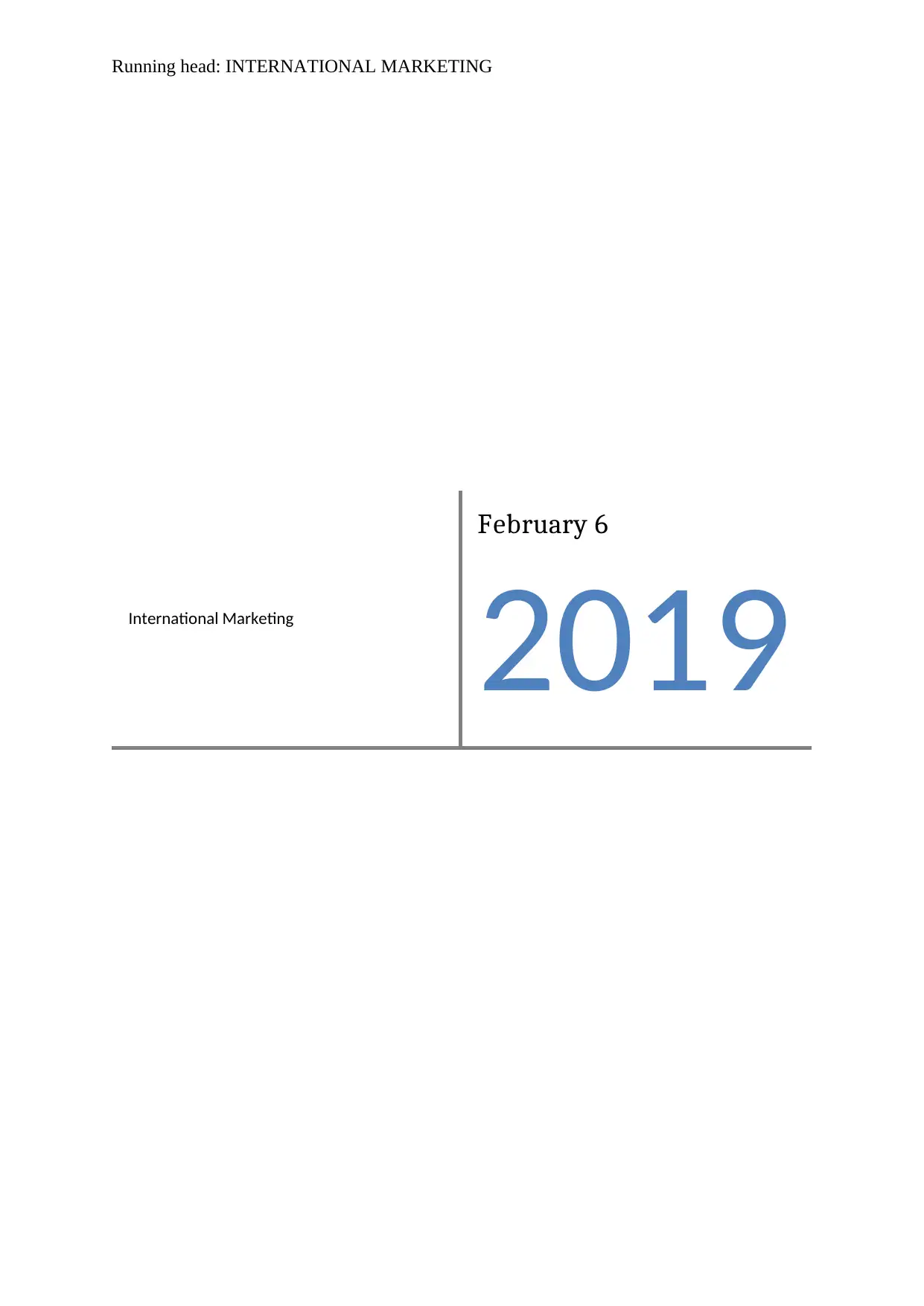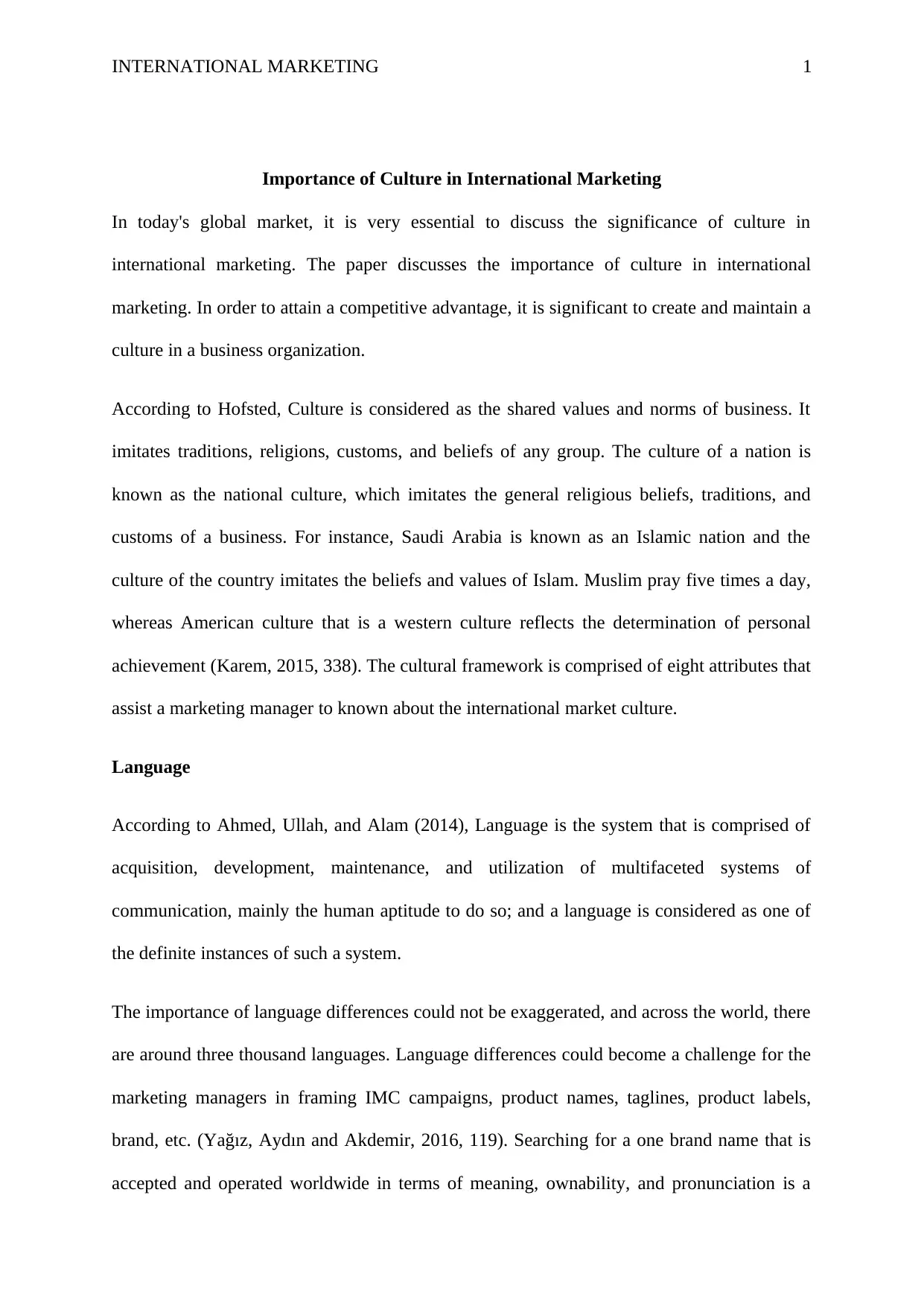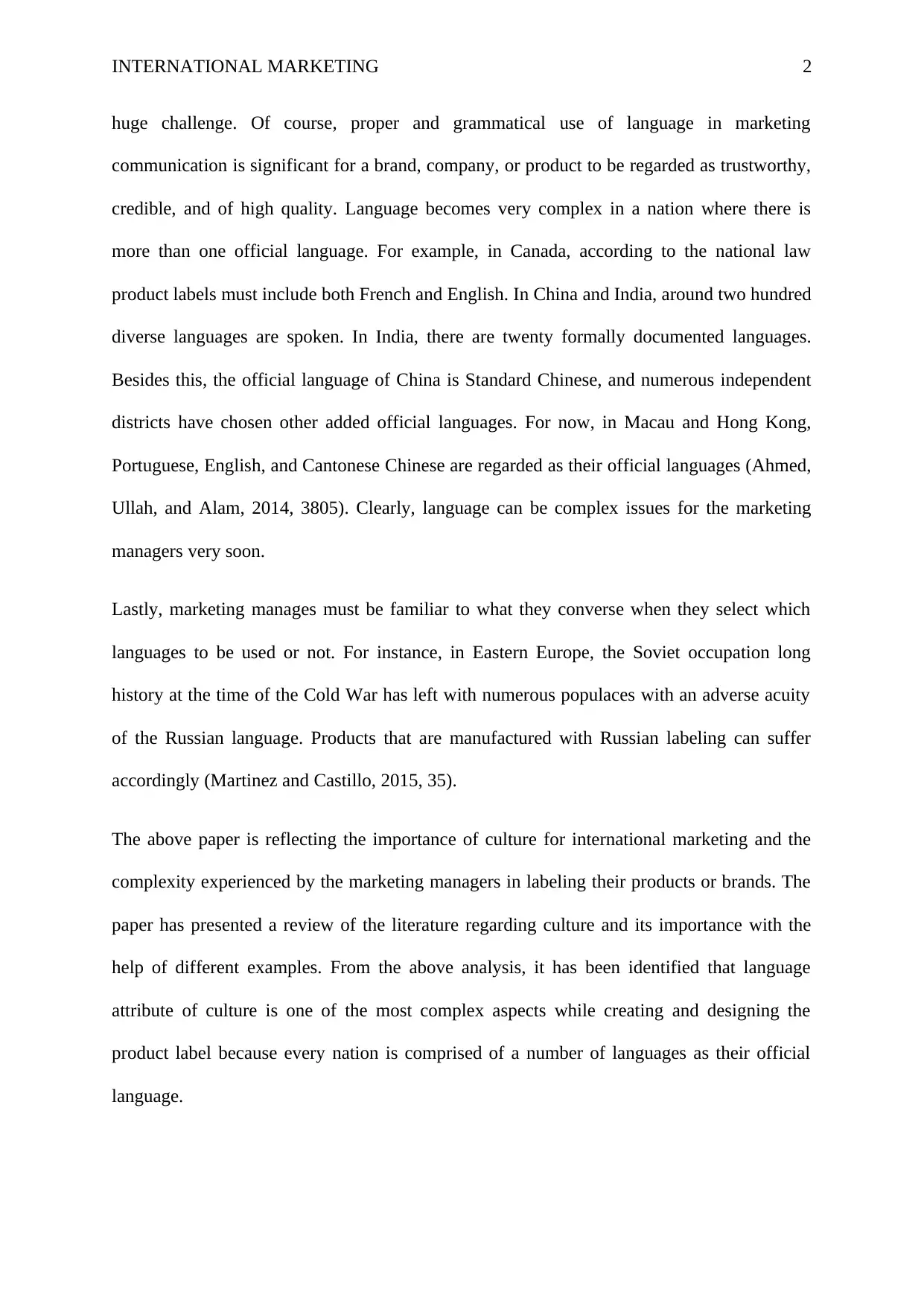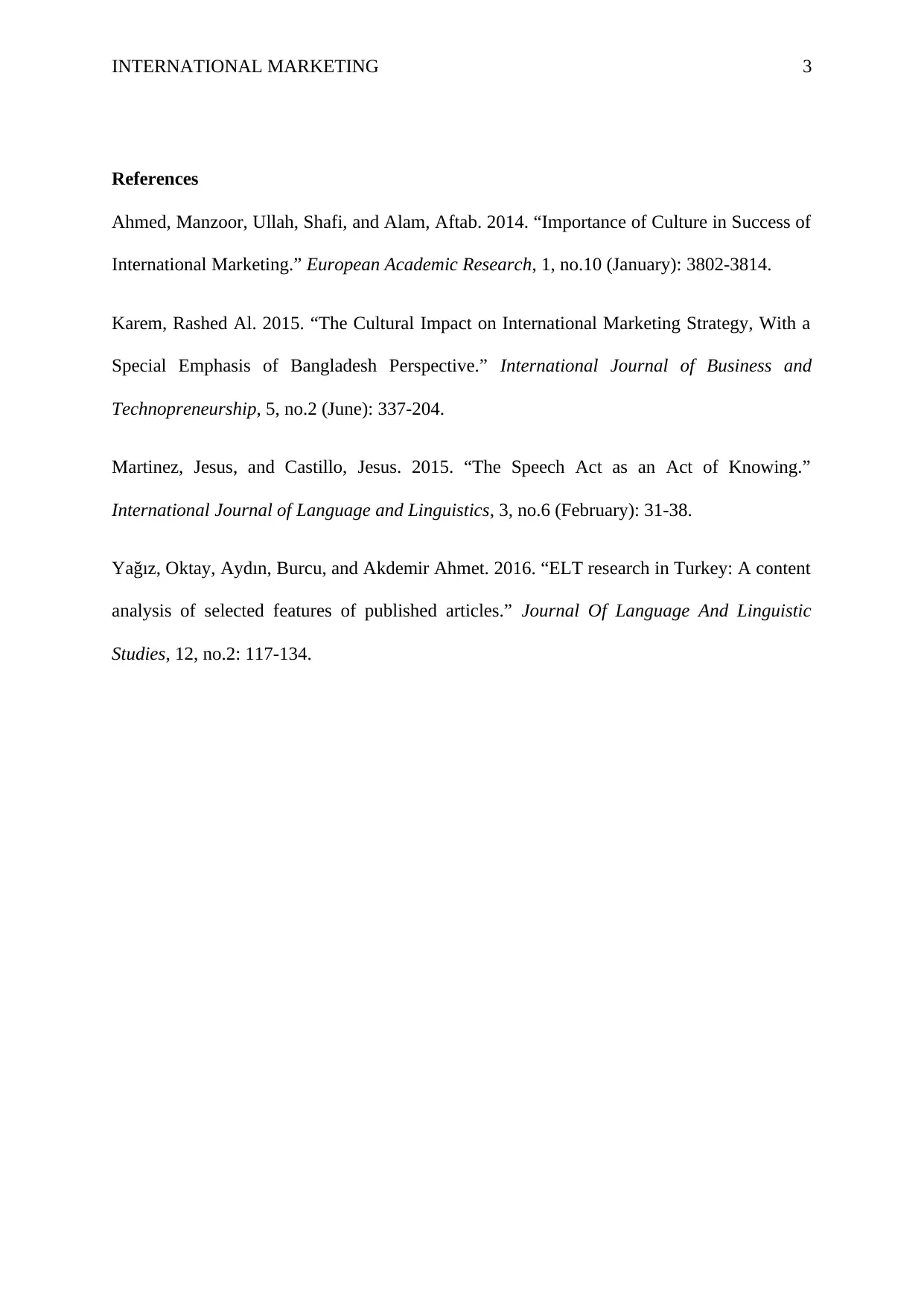The Significance of Culture in International Marketing Strategies
VerifiedAdded on 2023/04/25
|4
|847
|379
Report
AI Summary
This report delves into the critical importance of culture in international marketing, highlighting how cultural factors significantly influence marketing strategies. It emphasizes that establishing and maintaining a strong organizational culture is essential for gaining a competitive advantage. The report references Hofstede's definition of culture as shared values and norms, including traditions, religions, customs, and beliefs. It then explores the impact of national culture, using examples such as the cultural differences between Saudi Arabia and the United States. The report then discusses the significance of language, and its impact on marketing efforts. The report uses examples to demonstrate how language differences can pose challenges for marketing managers in framing IMC campaigns, product names, taglines, and product labels. Furthermore, the report provides a review of the literature regarding culture and its importance with the help of different examples. From the analysis, it has been identified that language attribute of culture is one of the most complex aspects while creating and designing the product label because every nation is comprised of a number of languages as their official language. The report concludes by emphasizing the need for marketing managers to understand and navigate these cultural nuances to ensure effective global marketing strategies.
1 out of 4







![[object Object]](/_next/static/media/star-bottom.7253800d.svg)